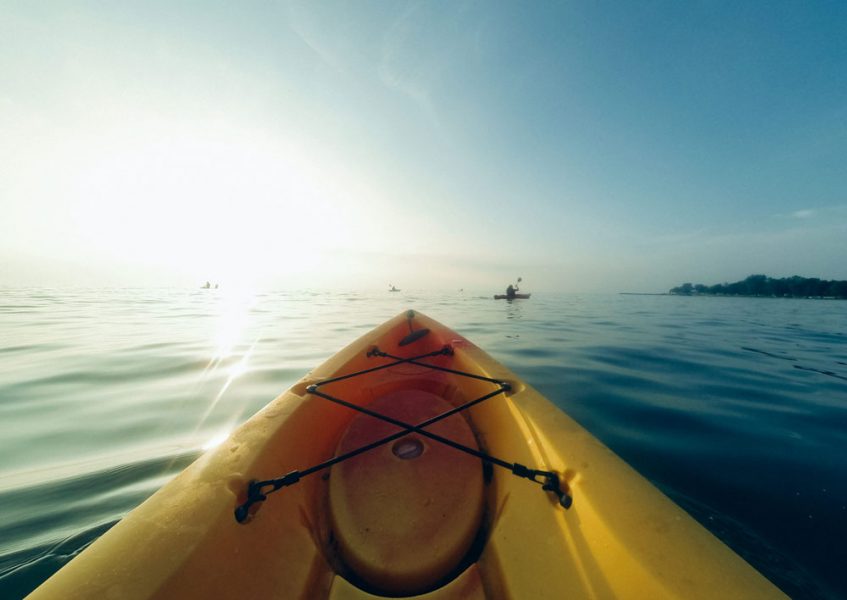
Kayaking is one of the great water sports many people enjoy due to the fact it can be done at a leisurely pace or taken seriously. The great thing about the sport is that people of all ages can enjoy it, from young kids to adults.
Adding to the enjoyment, you can kayak on different kinds of water, too. You can go out for a paddle on rivers, calm lakes with a view or more turbulent waters like the sea or whitewater rivers.
No matter which location you choose to paddle, injuries and accidents can happen. Even the most seasoned kayakers can find themselves in a spot of trouble.
When you choose to take the kayak out, you need to make sure that you are well prepared, both physically and also well-equipped.
Types of Injuries

Due to the physical nature of the sport, injuries are commonplace. However, some of the injuries and ailments you can pick up are always ones you’d normally think about.
Of course, there are the physical injuries which can occur from impact, possibly falling into an object like rocks or logs. People also injure shoulders and wrists from the strain of paddling and the force required to move through the water.
Other injuries to be aware of are sunburn, dehydration, hypothermia or drowning.
Identifying Potential Risks
In order to prepare yourself for kayaking, aside from simply a checklist of equipment, you should learn what the potential risks are. That way, you will be in a much better place to make decisions based on your experience level and what’s in front of you.
One of the main reasons people get into difficulty while kayaking is overestimating their ability level.
For example, a beginner may not have the skills required to get themselves out of faster moving water. Furthermore, people often choose a path/water way which is too advanced for their skill level.
Some kayaks are also much easier to tip over and a beginner may not be able to control the movement properly.
Another common risk to avoid is lack of protective equipment. Even if you think you’ll be ok to take the kayak out for a short paddle, it is always important to take appropriate life jackets or flotation devices. Many instances warrant wearing helmets too, due the fact you could turn over onto a log or rock.
Weather Check

Before you head out on the water, you should always do a weather check for conditions which may worsen throughout the day:
- Avoid kayaking when the waters are turbulent i.e. in storms or high winds.
- Additionally, try to avoid the heat of the day by heading out early morning or later in the evening.
General Safety Advice
As well as watching out for the conditions and making sure you have the correct safety equipment, there are other actionable safety tips which we have listed below:
- Always let someone know you’re going out
- Make sure you are a competent swimmer
- Consider kayaking lessons to learn how to get out of danger efficiently
- Remain calm if you fall into the water
- Always take a lifejacket
- Learn how to perform first aid in case you need to help anyone
- Talk to locals to get an idea of the area
- Don’t overload the kayak
- Make sure the lifejacket is the correct size for you
Final Thoughts
It’s incredibly tempting to head out on the water and not consider yours or your own safety. However, with a better awareness of dangers and taking very simple steps (like bringing a lifejacket), you can prevent a fun day out from becoming a potentially fatal situation.
 Your Privacy Choices
Your Privacy Choices
 The
The